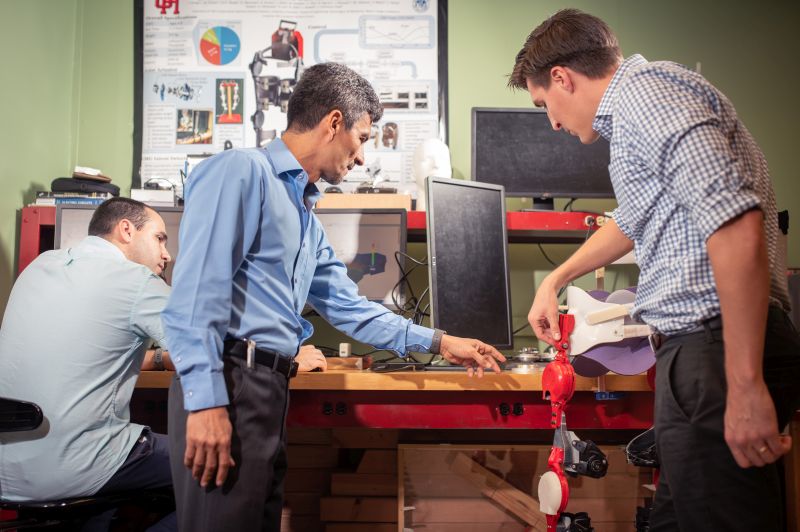An invention from University of Houston researchers to help children with walking disabilities has won the Southwest National Pediatric Device Innovation Consortium’s Pediatric Device Prize at this year’s South by Southwest.
The award, which comes with $25,000 in funding, was one of two given by SWPDC in that category at this year’s SXSW. The UH device is the Pediatric Lower-Extremity Gait System – P-LEGS – which is a mobility assistant, rehabilitation platform and diagnostic tool designed to help children with motor disabilities. It was chosen from a field of 18 entrants.
Jose Luis Contreras-Vidal, Ph.D., Hugh Roy and Lillie Cullen Distinguished Professor of Electrical and Computer Engineering and the director of UH’s BRAIN Center, is the principal investigator for the project. The graduate student lead for the project is David Eguren. Other team members include Alexander Steele, Yang Hu, Krishna Sarvani Desabhotla, Swagat Bhandari, Lujayna Taha, Nivriti Sabhnani and Allen Shen.
“We were excited and honored to have been selected by the SWPDC for this award,” Eguren said. “The award will be valuable in helping us continue device development and testing.”
Contreras-Vidal noted that the project has been the result of a strong partnership between UH and other organizations.
“This project has been a collaboration with Dr. Gerard Francisco at TIRR Memorial Hermann, and the NSF IUCRC BRAIN Center, and supported by Mission Connect - A TIRR Foundation and the UH Chancellor's Bridging Technology Fund.”
The Pediatric Lower-Extremity Gait System (P-LEGS) is a modular device with a total of six motors that provide sagittal plane support in the hip, knee and ankle joints of each leg. It also has two non-motorized degrees of freedom at the hips to allow for weight shifting during walking. The walking pattern and level of support provided are customizable on a joint-by-joint basis to accommodate the unique needs of each child within the target clinical populations. The device is multifunctional and characterized as rehabilitation technology, assistive technology and as a diagnostic tool.
An advantage of the P-LEGS is its ability to “grow” with the child. Thanks to 3D printed braces that are made from digital scans of the child’s legs, costs are significantly reduced, and the device can be used for multiple children. When the child grows, the braces are rescanned and implemented in the device, causing the device to “grow” with the child.
Contreras-Vidal and Eguren said the goal is to provide children with a low-cost device that can be used outside of clinics and rehabilitation centers. Those children can then receive increased amounts of therapy, with the aim of improving their ability to independently care for themselves.
